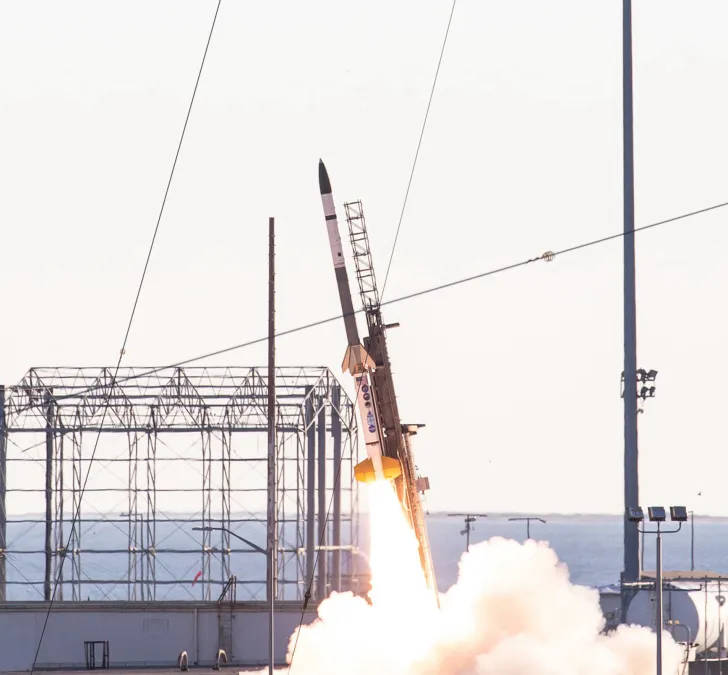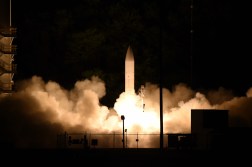Price tag for Navy’s CPS hypersonic weapon is ‘higher than we want it to be,’ Pentagon acquisition chief says

The Navy intends to spend upwards of $50 million per round, on average, for its Conventional Prompt Strike hypersonic weapon over the next five years. But the Defense Department needs to lower the price tag for these types of missiles, according to the Pentagon’s acquisition chief.
The sea service plans to buy 64 CPS missiles in fiscal 2024-2028 at a total cost of more than $3.6 billion. The “flyaway unit cost” would average $51 million, and the gross weapon system unit cost would average $56.5 million, according to budget justification documents.
By comparison, many of the Navy’s other advanced missiles cost a few million dollars per round or less.
The service plans to begin deploying the CPS capability on stealthy Zumwalt-class destroyers in fiscal 2025 and on Virginia-class submarines in fiscal 2028.
“We’re just for the first time as a country getting to production of hypersonics, and not surprisingly the average unit cost is … higher than we want it to be and we need to bring it down,” Undersecretary of Defense for Acquisition and Sustainment William LaPlante told DefenseScoop at the Navy League’s Sea-Air-Space conference on Tuesday.
“I would say there’s very promising manufacturing and technologies that are out there, including with other partners and allies, that can get it much lower than the $50 million,” he added.
For hypersonics writ large, officials should shoot for a per round price tag of less than $10 million, he suggested.
“I would think an average procurement unit cost of in the single digit millions is where we should aim for it. And we’re actually looking at some that are as low as $3 million an all-up round. That’s where we want to be,” he said.
The “single digit millions” figure could apply to either hypersonic cruise missiles or boost glide systems, LaPlante said.
“In general, we’re looking at concepts for cruise missiles and we would like to get it under 10 — ideally as low as $3 million,” he told DefenseScoop “I’m not going to name the system [that might be as low as $3 million per round] because it’s still pre-decisional. But the more important point rather than what that system is, is that we want to get that price point down under in the single digits.”
In addition to CPS, the Navy is also pursuing a so-called “hypersonic” weapon known as HALO, although that air-launched system might not technically reach hypersonic speeds of Mach 5 or higher. The service aims to field HALO in fiscal 2029.
The Army and Air Force are also pursuing their own fast-flying systems such as the Long Range Hypersonic Weapon and the Hypersonic Attack Cruise Missile, respectively.
Hypersonics are highly sought by the U.S. military because their speed and maneuverable and expected to pose a major challenge to enemy air defenses. Potential adversaries such as China and Russia have already fielded these types of capabilities, and the Pentagon is trying to catch up.
“The CPS weapon system will deliver a hypersonic conventional offensive strike capability through a depressed boost-glide trajectory to prosecute deep-inland, time-critical, soft and medium-hardened targets in contested environments,” according to Navy budget documents.
However, some of the Defense Department’s recent hypersonics tests haven’t gone as well as officials had hoped, including for the Air Force’s ARRW program. But LaPlante said the Pentagon shouldn’t let that deter officials from pushing forward.
“The second piece is really changing the mentality of how we think about ‘test failure or success.’ The only failed test is one where you don’t learn anything … We have to have much better of an appetite to learn, because the worst thing you can do is have a failure and say, ‘Oh, it’s a failure, we didn’t learn anything,’ and then stop,” LaPlante said.
He noted that the DOD has halted hypersonics work in the past due to perceived failures, but potential adversaries like China and Russia kept pushing forward with their programs.
The Biden administration is trying to bolster the industrial base for these types of technologies, and President Biden recently invoked the Defense Production Act to further those aims.
“The final piece is we did get the Defense Production Act Title III [authorities] for underpinning materials and the like for hypersonics about a month ago. So, we’re not stopping for hypersonics. We’re gonna keep going,” LaPlante said.






